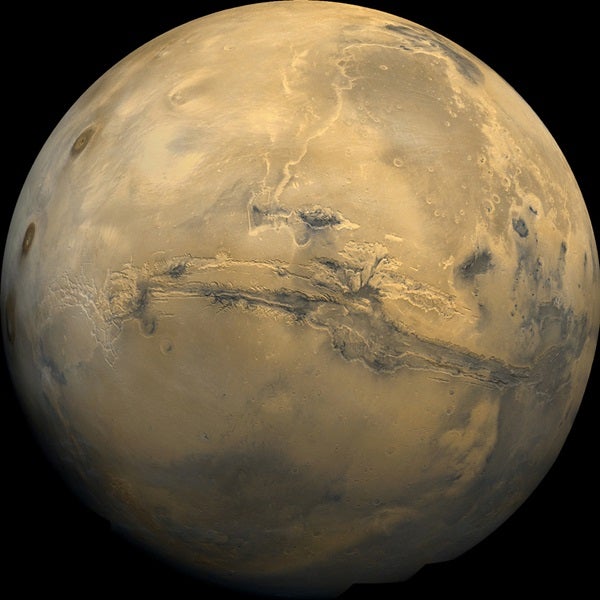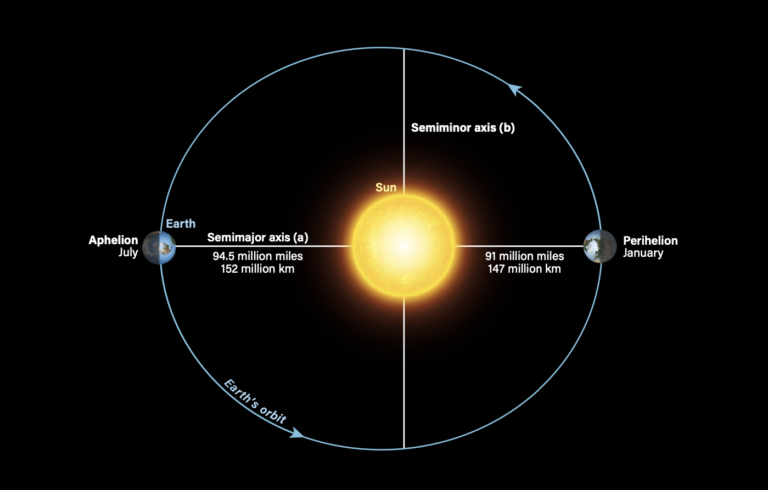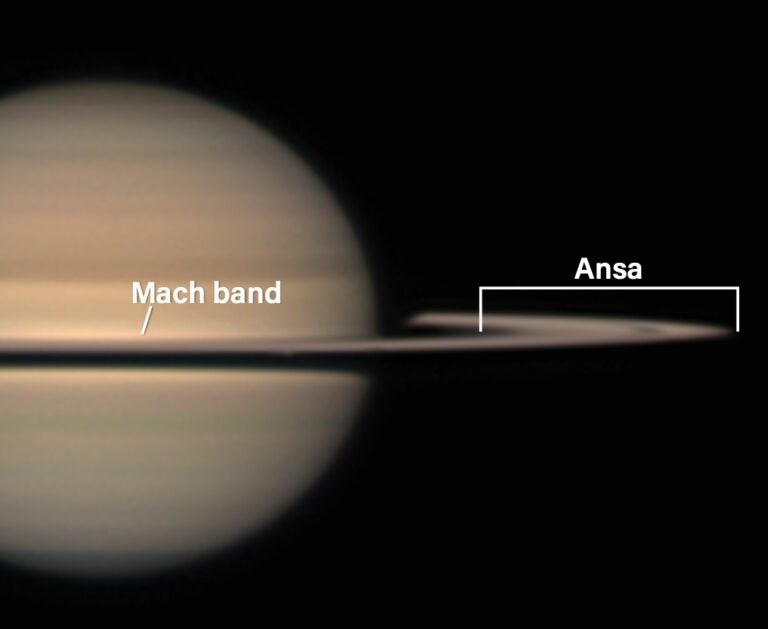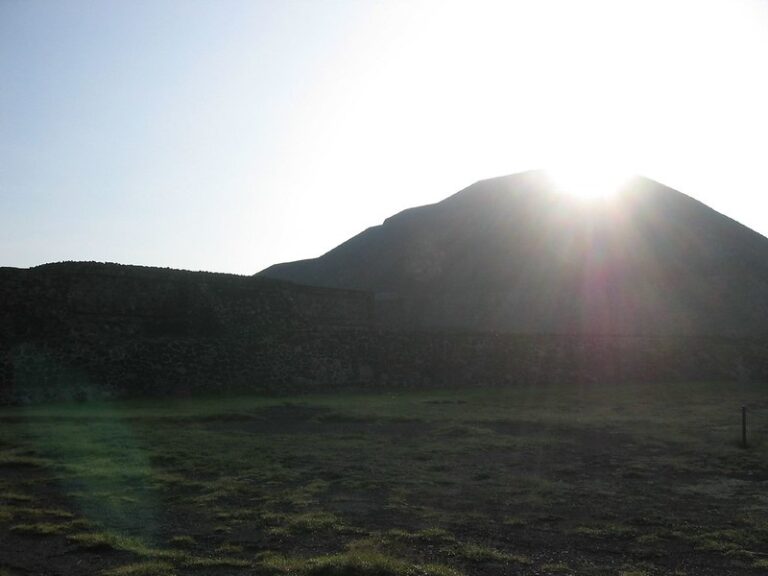Valles Marineris, the great canyon of Mars that stretches for more than 2,500 miles (4,000 kilometers) and is up to 4.3 miles (7.0km) deep, formed as the martian lithosphere spread apart early in the Red Planet’s history. The lithosphere is the solid, uppermost portion of the planet that sits above the partly molten mantle. The martian lithosphere is approximately 120 miles (200km) thick — much thicker than Earth’s. This cold lithosphere has a great deal of strength and can hold up the large martian volcanoes such as Olympus Mons.
As on Earth, the mantle of the Red Planet is slowly moving, or convecting, which produces stretching and pulling forces at the bottom of the lithosphere. On our planet, these forces are strong enough to break the lithosphere into plates that can move apart, creating continental drift and plate tectonics. On Mars, the lithosphere is too thick to be able to move great distances, but the mantle’s force was strong enough to pull the lithosphere apart, creating the deep parallel canyons of Valles Marineris.
As on Earth, the mantle of the Red Planet is slowly moving, or convecting, which produces stretching and pulling forces at the bottom of the lithosphere. On our planet, these forces are strong enough to break the lithosphere into plates that can move apart, creating continental drift and plate tectonics. On Mars, the lithosphere is too thick to be able to move great distances, but the mantle’s force was strong enough to pull the lithosphere apart, creating the deep parallel canyons of Valles Marineris.
Phil Christensen
Arizona State University, Tempe
Arizona State University, Tempe










